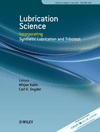
Lubrication Science
Scope & Guideline
Driving collaboration in the field of tribology.
Introduction
Aims and Scopes
- Tribological Performance Evaluation:
The journal emphasizes the assessment of tribological performance across various systems, including bearings, gears, and other mechanical components, using experimental and computational methods. - Innovative Lubricant Formulations:
Research on the development and optimization of lubricants, including bio-based, nano-additive, and environmentally friendly formulations, is a core focus area. - Surface Engineering and Coatings:
The journal explores advanced surface engineering techniques, such as coatings and textures, to improve lubrication performance and reduce wear and friction. - Numerical and Experimental Studies:
A significant portion of the research published involves numerical simulations and experimental investigations to understand lubrication mechanisms under different operational conditions. - Sustainability and Green Lubrication Technologies:
Research addressing sustainability, including the use of biodegradable lubricants and the recycling of spent lubricants, is increasingly prominent in the journal.
Trending and Emerging
- Nanotechnology in Lubricants:
The integration of nanoparticles and nanostructured materials in lubricant formulations is gaining traction, with studies highlighting their effectiveness in enhancing tribological properties and reducing friction and wear. - Bio-Based and Sustainable Lubricants:
There is a notable increase in research focused on bio-based lubricants, reflecting a broader trend towards sustainability and the development of environmentally friendly lubrication solutions. - Advanced Computational Methods:
The use of advanced computational techniques, such as machine learning and molecular dynamics simulations, is emerging as a significant trend for predicting lubrication performance and optimizing lubricant formulations. - Multi-Functional Lubricants:
Research is increasingly focusing on multi-functional lubricants that not only reduce friction and wear but also provide additional benefits such as corrosion resistance and thermal stability. - Surface Modification Techniques:
Emerging studies on surface modification, including laser texturing and coatings, are becoming prevalent as researchers seek to optimize surface interactions and enhance lubrication performance.
Declining or Waning
- Conventional Mineral Oil Lubricants:
Research focused on traditional mineral oil lubricants has decreased as interest shifts towards bio-based and synthetic alternatives that offer better environmental and performance characteristics. - Static Lubrication Studies:
The emphasis on static lubrication mechanisms has waned, with more research directed towards dynamic and transient lubrication scenarios that better mimic real-world operating conditions. - Basic Wear Mechanisms:
While foundational studies on wear mechanisms remain relevant, there is a declining focus on basic wear analyses in favor of more complex and application-specific studies involving advanced materials and additives.
Similar Journals

Materiali in Tehnologije
Exploring the Frontiers of Material TechnologiesMateriali in Tehnologije is a distinguished peer-reviewed journal dedicated to the field of materials science, focusing specifically on metals and polymers. Published by the Institute for Metals and Materials Technology in Slovenia, this open-access journal has been at the forefront of disseminating research findings and innovative technologies since 2000. With a current impact factor that reflects its increasing visibility in the academic community, Materiali in Tehnologije serves as an invaluable resource for researchers, professionals, and students alike, encompassing a wide array of studies in the categories of Metals and Alloys, as well as Polymers and Plastics. The journal is indexed in Scopus, highlighting its relevance and contribution to the field, particularly with its ranks of Q3 in Metals and Alloys and Q4 in Polymers and Plastics. As it converges towards 2024, Materiali in Tehnologije continues to be a pivotal platform for knowledge exchange, encouraging advancements in materials research and technology.
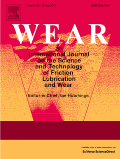
WEAR
Fostering Dialogue in the World of Wear and FrictionWEAR is a premier journal published by Elsevier Science SA, specializing in the field of materials science, particularly in the dynamics of wear and friction at the micro and nanoscale. Since its inception in 1957, this esteemed journal has evolved into a critical resource for researchers, professionals, and students alike, showcasing cutting-edge research and developments that significantly impact the disciplines of Condensed Matter Physics, Mechanics of Materials, Materials Chemistry, and Surfaces and Interfaces. With an impressive impact factor and consistently recognized as a Q1 category journal across various Scopus rankings, WEAR ranks in the top tiers of its field, underscoring its importance and influence within the academic community. The journal serves as a vital platform for disseminating innovative findings and applications, fostering scholarly dialogue, and advancing the understanding of material behaviors under wear and friction processes. For those keen on accessing the latest research in these dynamic areas, WEAR is an indispensable resource, promising a comprehensive collection of high-quality articles that reflect the forefront of scientific inquiry.
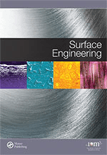
SURFACE ENGINEERING
Unveiling the Future of Material EngineeringSURFACE ENGINEERING, published by SAGE Publications Inc, is a premier international journal dedicated to the advancement of knowledge in the fields of material surface science and engineering. With an ISSN of 0267-0844 and E-ISSN 1743-2944, this esteemed journal has been a critical resource since its inception in 1985, and continues to thrive through 2024. Recognized for its impactful contributions, SURFACE ENGINEERING achieves notable rankings in several categories including Q1 in Conservation and Q2 in key areas such as Condensed Matter Physics and Materials Chemistry. The journal serves a diverse audience of researchers, professionals, and students, providing them with insightful research articles, reviews, and technological developments that drive innovation in surface coatings, materials chemistry, and related disciplines. Although the journal follows a traditional subscription model, it remains an essential platform for disseminating crucial findings and fostering collaborations within the scientific community.

SURFACE SCIENCE
Advancing Knowledge in Surface EngineeringSURFACE SCIENCE is a prominent journal in the fields of Condensed Matter Physics, Materials Chemistry, and Surface Engineering, published by Elsevier in the Netherlands. With an ISSN of 0039-6028 and an E-ISSN of 1879-2758, the journal encompasses a wide range of research related to the physical and chemical properties of surfaces and interfaces, serving as a valuable resource for researchers, professionals, and students alike. As of 2023, it holds a Q3 ranking across multiple categories, indicating its significant contribution to its respective fields, despite room for improvement in its overall impact within the scientific community. Researchers will find that SURFACE SCIENCE provides a platform for innovative and interdisciplinary studies, making it essential for those looking to stay updated on emerging trends and technologies in surface science. While the journal is currently not open access, its reputation and robust indexing reinforce its importance in advancing scientific knowledge and fostering new discoveries.

TRIBOLOGY LETTERS
Unveiling the Science Behind Wear, Friction, and LubricationTRIBOLOGY LETTERS is a distinguished peer-reviewed academic journal published by SPRINGER/PLENUM PUBLISHERS, focusing on advancements in the field of tribology and its applications across various engineering domains. With an ISSN of 1023-8883 and an E-ISSN of 1573-2711, this journal serves as a crucial platform for disseminating cutting-edge research and technological innovations, operating from its esteemed headquarters in the United States. The journal is categorized in the Q2 quartile across multiple domains including Mechanical Engineering, Mechanics of Materials, Surfaces and Interfaces, and Surfaces, Coatings and Films, showcasing its significant impact within the respective fields. With Scopus rankings placing it in the top 25% for Engineering and top 20% for Physics and Astronomy related categories, TRIBOLOGY LETTERS continues to be an essential resource for researchers, professionals, and students looking to deepen their understanding of tribological phenomena and enhance their applications in industry and technology. While it does not currently offer open access options, the journal continues to invite high-quality contributions that contribute to the ongoing dialogue and advancement in tribological science.

SURFACE COATINGS INTERNATIONAL
Exploring the Future of Surface CoatingsSURFACE COATINGS INTERNATIONAL is a prominent journal dedicated to the field of surface coatings, providing a critical platform for researchers, professionals, and students involved in this ever-evolving discipline. Published by the Oil & Colour Chemists Association, this journal disseminates high-quality, peer-reviewed articles that explore innovative advancements, applications, and methodologies related to coating technologies. With a focus on both theoretical and practical aspects, the journal aims to bridge the gap between research and real-world applications, promoting excellence in the development and performance of surface coatings across various industries. Although it does not currently operate on an open access model, the significance of its contributions to the field, coupled with its commitment to fostering scientific discussion, positions SURFACE COATINGS INTERNATIONAL as an essential resource for those seeking to enhance their knowledge and innovate within this specialized area.
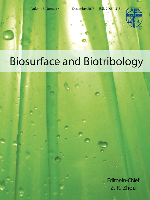
Biosurface and Biotribology
Exploring the Frontiers of Biomaterials and Surface EngineeringBiosurface and Biotribology, published by WILEY, is an innovative Open Access journal that has been dedicated to advancing the fields of biomaterials, biomedical engineering, and tribology since its inception. With a focus on the surface interactions and tribological behaviors of materials, this journal serves as an essential platform for researchers and professionals eager to explore the intersections of engineering, materials science, and biophysics. While it holds a current categorization in the Q4 quartile for biomaterials and biomedical engineering and a Q3 ranking in mechanical engineering, the journal's commitment to disseminating high-quality, peer-reviewed research contributes to its growing visibility and relevance in the academic landscape. With open access since 2018, it ensures that the latest research is freely available to all, fostering collaboration and innovation. Whether you are a graduate student, a seasoned researcher, or a professional in the field, Biosurface and Biotribology is your gateway to cutting-edge insights and developments that are shaping the future of biomaterials and surface engineering.
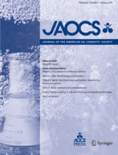
JOURNAL OF THE AMERICAN OIL CHEMISTS SOCIETY
Transforming Ideas into Impactful ResearchJOURNAL OF THE AMERICAN OIL CHEMISTS SOCIETY, published by WILEY, is a premier academic journal that has been at the forefront of research in the fields of chemical engineering and organic chemistry since its inception in 1947. With an ISSN of 0003-021X and an E-ISSN of 1558-9331, this journal serves as an invaluable resource for researchers and professionals interested in the latest advancements and methodologies in oil chemistry and related disciplines. The journal holds impressive rankings, placing in the Q2 category for Chemical Engineering and Q3 for Organic Chemistry, reflecting its influential position in the academic community as evidenced by its Scopus rankings. While it follows a subscription model, the journal remains committed to disseminating quality research, aiming to enhance understanding and application within the chemical science sector. Researchers, professionals, and students engaged in oil chemistry and engineering will find JOURNAL OF THE AMERICAN OIL CHEMISTS SOCIETY crucial for staying abreast of developments that shape this dynamic field, as it continues to publish cutting-edge research through to 2024 and beyond.

Journal of Friction and Wear
Unraveling the Secrets of Material PerformanceJournal of Friction and Wear, published by PLEIADES PUBLISHING INC, is a pivotal resource in the field of mechanical engineering, with a particular emphasis on the study of friction, wear mechanisms, and their implications in various materials. With an ISSN of 1068-3666 and an E-ISSN of 1934-9386, this journal provides a platform for cutting-edge research and reviews that contribute significantly to our understanding in these areas. Although currently classified under Q3 in both Mechanics of Materials and Surfaces, Coatings and Films, the journal is making strides towards higher rankings, reflecting its growing influence as it publishes comprehensive analyses and innovative findings. Researchers and professionals can access vital studies, offering insights into improving material durability and performance, integral to numerous industries. This journal serves as a key reference point for students and scholars alike, supporting their quest for knowledge in the evolving landscape of material science.
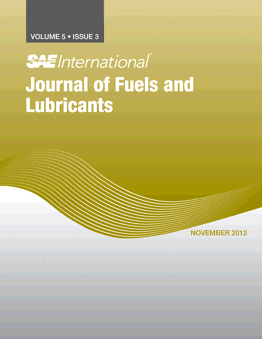
SAE International Journal of Fuels and Lubricants
Pioneering Research for a Greener TomorrowWelcome to the SAE International Journal of Fuels and Lubricants, a leading peer-reviewed publication dedicated to advancing knowledge in the crucial fields of fuel technology and lubrication science. Published by SAE International, this journal serves as a vital resource for researchers, industry professionals, and students engaged in the study and application of innovative fuels and lubricants. With an impact factor indicative of its importance, the journal is ranked in the Q3 category for both Fuel Technology and Pollution, highlighting its critical role in addressing global energy and environmental challenges. Covering a range of topics from fundamental research to practical applications, the journal not only contributes to academic discourse but also serves to inform industry practices. Our publication spans the converged years from 2009 to 2024, reflecting a commitment to continuous scholarly contribution. While currently operating under a traditional access model, the journal aims to foster an inclusive environment for discourse in the rapidly evolving fields of energy and environmental science.